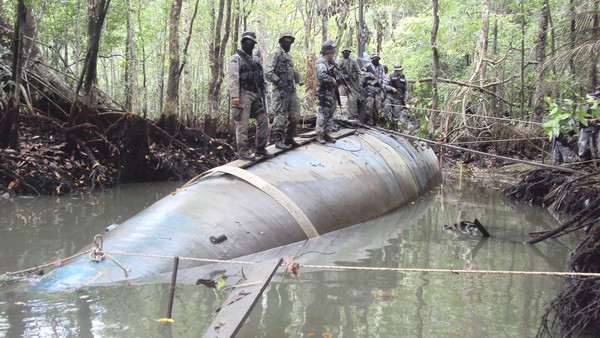
Ecuadorean security forces stand on a submarine being built clandestinely by suspected drug traffickers in mangrove swamps near San Lorenzo. (Associated Press) |

Ecuadorean security forces stand on a submarine being built clandestinely by suspected drug traffickers in mangrove swamps near San Lorenzo. (Associated Press) |
July 6, 2010





All the technology described has existed for years, so considering the financial resources (financing the construction) and power to corrupt (purchasing tech-support from unscrupulous military specialists) which the drug cartels currently bring to the table, I wonder how many such craft have actually been built and have been plying their trade undetected and for how long?
If "every resource" will be required to stop this, perhaps it's time to think about expending "no resource" on the problem. Note the inevitable reference to "terrorism," here, indicating that the two "wars" are linked in some strange way, perhaps because they are as much products of American paranoia as they are of actual evils out there somewhere in the world.
Sealing the border will not stop the drug
cartels. They use planes, helicopters, tunnels, submarines, and
whatever else they need to move drugs. They have equipped trucks
with secret panels and devices to avoid detection by X-rays and
drug-sniffing dogs.
There are not enough troops to make a difference. The US,
Mexico, Colombia, and other Latin American countries have been
throwing thousands of troops at the problem for decades.
The only way to cripple drug cartels and California street gangs
is legalize cannabis. It delivers big money to cartels and
gangs. They grow it cheap and make huge profits on high prices.
Legalizing cannabis will wipe out over 60% of their profits.